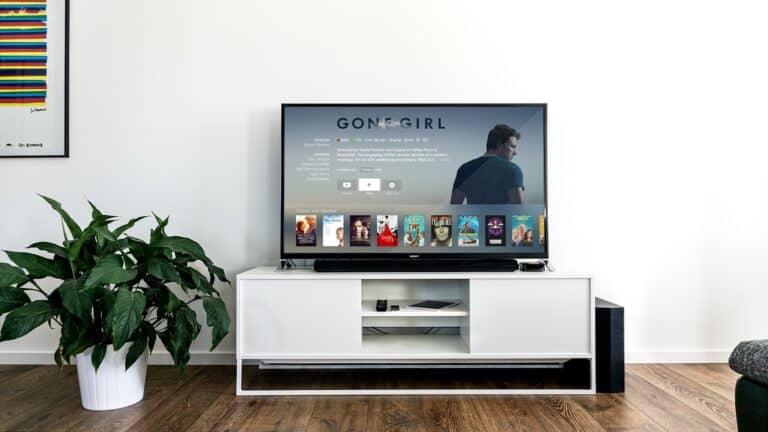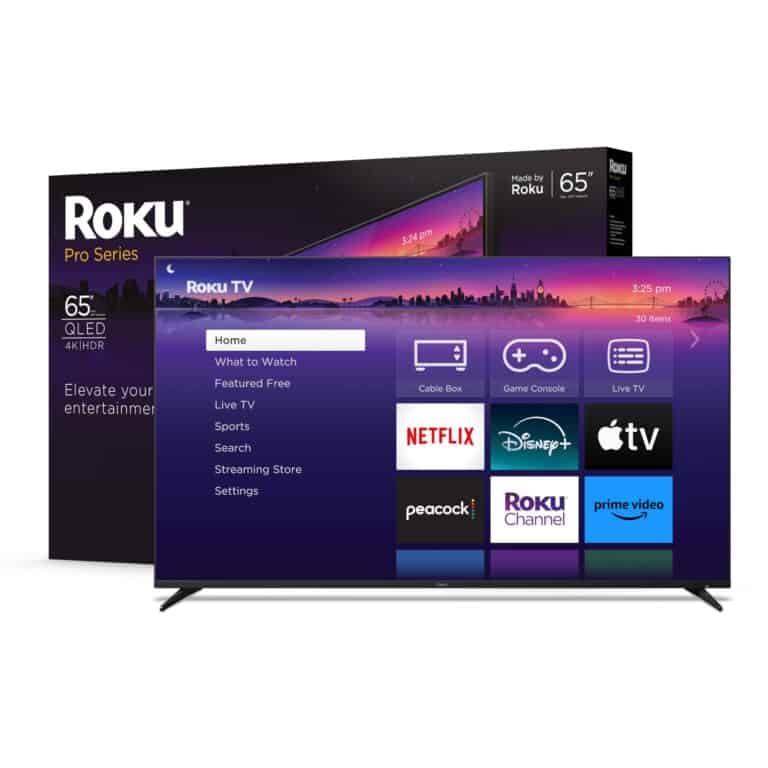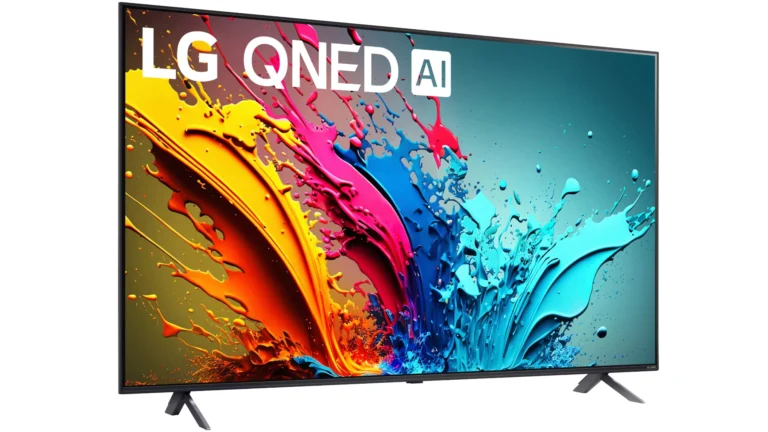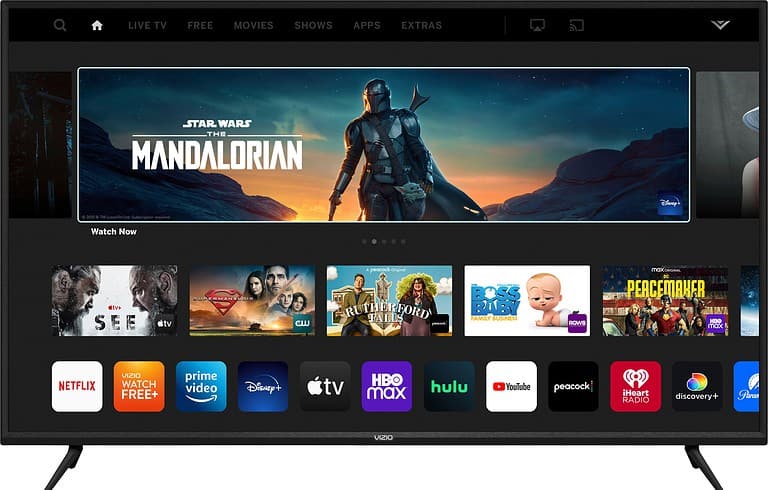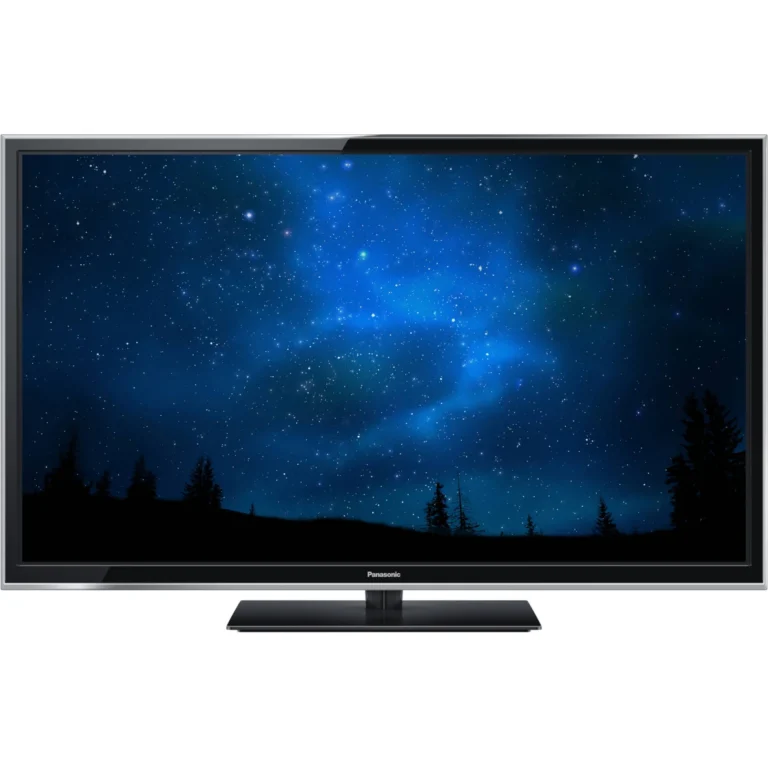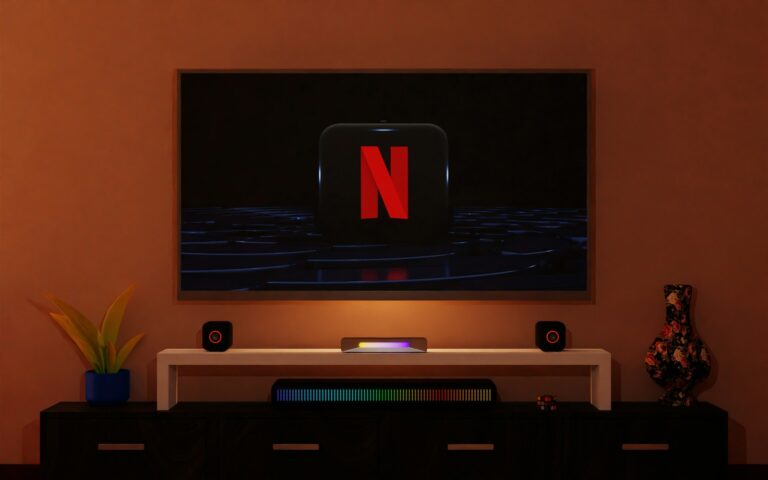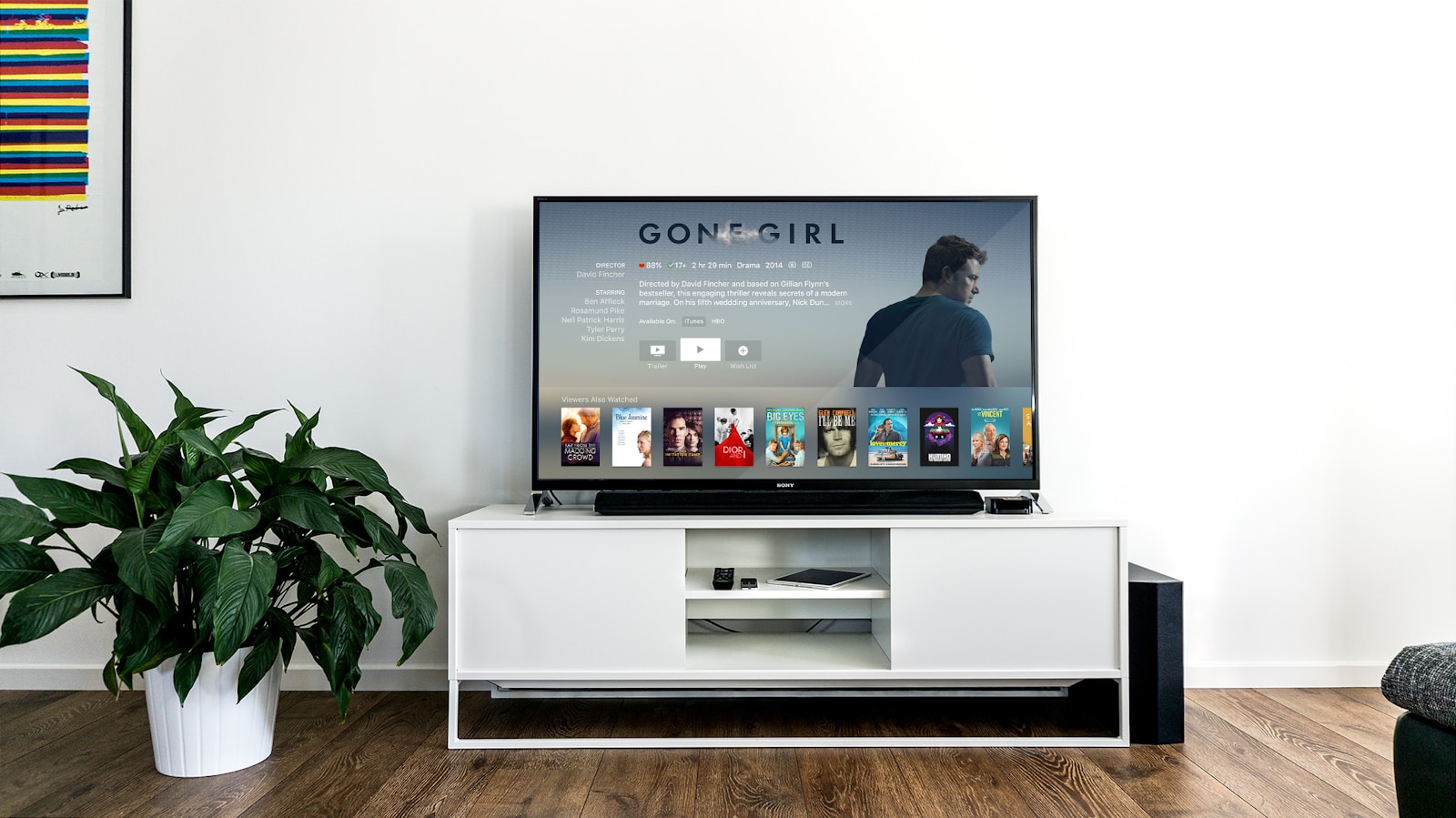
Ever wondered if your smart TV is watching you back? Many smart TVs today come with advanced features that raise important privacy questions. Some smart TVs do have built-in cameras, though not all models include this feature, and it typically depends on the brand and type you choose.
The idea of a TV with a camera might seem helpful for video calls, but it also opens the door to potential privacy concerns. There have been cases where smart TVs collected viewing data including what shows you watch, when you watched them, and even location information. Even more concerning, some security experts warn about the possibility of hackers accessing cameras on these devices.
What you might not realize is that TVs don’t even need cameras to collect data about your viewing habits. Modern smart TVs can track what content you watch, how long you spend watching it, and use this information for targeted advertising or other purposes you might not be aware of.
How to Detect and Protect Your Privacy
Smart TVs have become a central part of modern entertainment, offering streaming, apps, voice control, and even video calling features. However, many users worry about hidden cameras or microphones spying on them through their TVs. This guide will help you understand the risks, how to detect if your Smart TV has a camera or microphone, and what steps you can take to protect your privacy.
Do Smart TVs Have Cameras or Microphones?
- Built-in Microphones: Most Smart TVs today include microphones to enable voice commands and virtual assistants (like Alexa, Google Assistant, or Samsung’s Bixby). These microphones are always listening for wake words but are usually designed to process data locally or send commands only when activated.
- Built-in Cameras: Some Smart TVs come with built-in cameras primarily for video calls or gesture controls. However, built-in cameras are less common than microphones. Certain models (e.g., some Samsung or Hisense TVs) may feature cameras, but many do not.
- Hidden Cameras: There is no widespread industry practice or regulation that mandates hidden cameras in Smart TVs. However, concerns about unauthorized access or hacking remain valid. Hackers could potentially exploit vulnerabilities to remotely activate cameras or microphones.
How to Check if Your Smart TV Has a Camera or Microphone
- Consult the User Manual or Manufacturer’s Website:
The easiest way to know if your TV has a camera or microphone is to check official documentation or product specifications. - Physically Inspect Your TV:
Look closely around the bezel or frame of your TV for small lenses or pinhole cameras. Cameras are typically tiny and may be near the top edge of the TV. - Use Your Smartphone Camera:
Some cameras emit infrared light that is invisible to the naked eye but can be detected through a smartphone camera. Turn off the lights and scan your TV screen and bezel with your phone’s camera to spot any glowing dots. - Check TV Settings Menus:
Many Smart TVs have privacy or device settings where you can view and disable cameras and microphones. For example, Hisense TVs may have camera and microphone controls buried in submenus. - Network Scan for Suspicious Devices:
Use network scanning apps to check if your TV is sending unexpected data or communicating with unknown servers.
How to Disable or Block Cameras and Microphones on Smart TVs
- Disable Voice Features:
Turn off voice recognition or voice assistant features in your TV’s settings to prevent microphones from listening. - Cover the Camera:
If your TV has a built-in camera, physically cover it with opaque tape or a camera cover designed for privacy. - Disconnect from Network:
If you don’t use smart features, disconnect your TV from Wi-Fi or Ethernet to minimize data transmission. - Firmware Updates:
Keep your TV’s firmware updated to patch security vulnerabilities that could be exploited by hackers. - Factory Reset:
If you suspect your TV has been compromised, perform a factory reset and change your Wi-Fi passwords.
Additional Tips to Protect Your Privacy
- Use a Firewall or Network Security Tools:
Protect your home network with a robust firewall and monitor connected devices for unusual activity. - Avoid Linking Sensitive Accounts:
Don’t link your TV to sensitive accounts (e.g., banking apps) or unnecessary personal information. - Be Wary of Third-Party Apps:
Only install apps from official app stores and avoid sideloading unknown applications.
Summary
While most Smart TVs include microphones for voice commands, built-in cameras are less common and usually visible. The risk of hidden spy cameras is low but not zero, especially if the TV is hacked. By inspecting your device, adjusting privacy settings, and taking simple protective measures, you can enjoy your Smart TV with greater peace of mind.
Key Takeaways
- Only some smart TV models have built-in cameras, which varies by brand and price point.
- Your smart TV may collect viewing data and personal information even without a physical camera.
- You can check for cameras on your device and adjust privacy settings to better protect your information.
Understanding Smart TV Spy Cameras
Smart TVs have revolutionized home entertainment, but they’ve also introduced privacy concerns that weren’t issues with traditional televisions. These modern devices often include cameras and microphones that might be collecting more information than you realize.
Definition and Basic Functionality
Smart TV spy cameras are built-in or hidden cameras found in some modern television sets. Some smart TVs do come with cameras, though not all models include this feature. The cameras are typically designed for video calling functions or user recognition.
These cameras may be visibly mounted on the top bezel of the TV or hidden within the frame. Their primary purpose is to enable features like:
- Video conferencing with family and friends
- Facial recognition for personalized user profiles
- Gesture control for hands-free operation
- User presence detection to save power when no one is watching
You can usually check if your TV has a camera by examining the bezel or consulting your user manual.
Evolution of Smart TV Technology
Smart TV technology has rapidly evolved from basic internet connectivity to sophisticated monitoring systems. Early smart TVs simply connected to the internet for streaming services, but modern versions integrate deeply with your smart home ecosystem.
Today’s TVs collect significant data about your viewing habits. They track what you watch, when you watch, and how long you engage with content. This information helps streaming services recommend shows and enables advertisers to target you.
The addition of cameras and microphones has raised new privacy concerns. Some models can listen to conversations or watch activities in your living room, potentially sharing this data with manufacturers or third parties.
You should be aware that this monitoring capability extends beyond just using the TV features. Even when you think the TV is off, some systems remain partially active.
Smart TVs and Home Security
The growing connection between smart TVs and home security offers new opportunities for protecting your living space. Modern televisions can now serve as both entertainment centers and security monitoring stations.
Integration with Home Security Systems
Smart TVs can now connect directly with your existing home security setup. Many newer models allow you to view security camera feeds right on your television screen without switching devices.
You can easily check who’s at your front door or monitor other areas of your home by simply accessing the security app on your TV. This integration saves you from needing extra monitoring screens.
Some advanced setups even offer split-screen viewing where you can watch your program while keeping an eye on security feeds in the corner of your screen.
Popular brands like Samsung and LG have partnerships with security companies such as Ring and Nest, making the connection process nearly automatic.
To set up this integration:
- Check your TV’s app store for security applications
- Connect both devices to the same WiFi network
- Follow the pairing instructions in the app
Smart TV as a Surveillance Tool
Some smart TVs come with built-in cameras that can function as surveillance devices. These cameras might be visible or discreetly hidden in the bezel of the television.
You can use your TV’s camera for basic motion detection when you’re away from home. Many models send alerts to your phone when movement is detected.
For families, smart TVs can work as impromptu nanny cameras, allowing you to check on children or pets in the room when you’re in another part of the house.
Be aware that these features raise privacy concerns. Some TVs collect extensive data about viewing habits and can even track location information. To maintain privacy, you can:
- Cover the camera when not in use
- Disable data collection in settings
- Use TV models with physical camera covers
Spy Cameras Explained
Modern spy cameras are designed to be discreet while capturing high-quality video and audio. They come in various disguised forms and employ different technologies to record without detection, including those potentially integrated into your smart TV.
Characteristics of Spy Cameras
Spy cameras typically feature small, compact designs that make them easy to conceal. Most modern units offer high-definition video recording (720p to 4K) despite their tiny size. They often include night vision capabilities with infrared LEDs to capture footage in low-light environments.
Wireless connectivity is now standard, allowing remote viewing through smartphone apps. Many spy cameras are battery-powered with recording times ranging from 2-10 hours, though some can be hardwired for continuous operation.
The latest models include motion detection, which preserves battery life and storage space by only recording when movement is detected. Some advanced units offer facial recognition and can alert you when specific people are identified.
Storage options typically include microSD cards or cloud-based solutions with encryption for data protection.
Types of Spy Cameras
Everyday object cameras are designed to look like common items. These include:
- Clock cameras
- Pen cameras that function as actual writing instruments
- Smoke detector cameras
- Phone charger cameras
- Picture frame cameras
Wearable spy cameras can be disguised as:
- Eyeglasses
- Wristwatches
- Tie clips
- Buttons
Mini cameras are extremely small devices (often less than 1 inch in size) that can be hidden almost anywhere. They typically offer lower battery life but maximum concealment.
Professional-grade systems provide higher quality and features like remote access, but at a higher cost and complexity level.
Smart TV Camera Role in Spying
Your smart TV might have a built-in camera designed for video calls or gesture control. These cameras can potentially be accessed without your knowledge through hacking or by the manufacturer itself.
Many modern smart TVs collect viewing data and location information to serve targeted advertisements. Some use facial recognition technology to identify who’s watching and recommend personalized content.
You can protect yourself by:
- Covering the camera when not in use
- Disabling camera features in settings
- Disconnecting your TV from the internet when not needed
- Regularly checking and updating privacy settings
If privacy is a major concern, you might consider purchasing a non-smart TV and using a separate streaming device with better security controls.
Privacy Concerns
Smart TVs have created a new landscape of potential privacy risks for everyday users. These devices often collect data in ways many consumers aren’t aware of, while also introducing physical surveillance capabilities through built-in cameras and microphones.
Consumer Privacy Issues
Your smart TV is likely collecting more data than you realize. Many smart TVs use Automatic Content Recognition (ACR) to track what you’re watching and build a profile of your viewing habits. This information helps advertisers target you with personalized ads.
Some TVs have built-in cameras and microphones that could potentially record you without your knowledge. These features are marketed for video calls and voice commands, but they create significant privacy concerns.
The data collection doesn’t stop at what you watch. Smart TVs may track:
- Apps you use
- Browsing history
- Voice commands
- Room conversations (even when not actively using voice features)
Many manufacturers bury privacy policies in long agreements you likely skip through when setting up your TV.
Vulnerability to Hackers
Your smart TV creates another entry point for hackers into your home network. Unlike computers with regular security updates, many smart TVs receive infrequent firmware updates or none at all after a few years.
Hackers who gain access could potentially:
- Activate cameras to spy on your home
- Record conversations through built-in microphones
- Install malware on your device
- Use your TV as a jumping-off point to attack other devices on your network
The FBI has warned about these risks, noting that unsecured smart TVs create significant security vulnerabilities. Default passwords and outdated software make many models particularly susceptible to attacks.
Some hackers specifically target smart TV app stores to distribute malware disguised as legitimate applications.
Preventive Measures for Privacy
You can take several steps to protect your privacy while still enjoying your smart TV’s features. Start by reviewing and adjusting the privacy settings on your device. Find the privacy section in your TV settings and turn off options for data collection, personalized ads, and voice recognition when possible.
For physical protection:
- Place black tape over built-in cameras when not in use
- Disconnect microphones or disable them in settings
- Consider keeping your TV disconnected from the internet when not using smart features
Update your TV firmware regularly to patch security vulnerabilities. Change default passwords for any accounts associated with your TV, and use a strong, unique password.
Consider using a separate streaming device (like Roku or Apple TV) with better security practices instead of built-in smart TV functions. For maximum protection, you might want to avoid connecting your TV to the internet entirely and use external devices for streaming.
Network and Connectivity
Smart TVs with hidden cameras rely on network connections to transmit footage and receive commands. Understanding how these devices connect to your home network is crucial for protecting your privacy and security.
Wi-Fi Network Security
When your smart TV with a hidden camera connects to your Wi-Fi network, it creates potential security vulnerabilities. These devices typically use your home internet connection to send data to cloud servers or smartphone apps.
Always change the default passwords on your router and smart TV. Default credentials are easily found online, making them a prime target for hackers looking to access your devices.
Enable WPA3 encryption if your router supports it. This provides stronger protection than older security protocols like WPA2 or WEP.
Consider creating a separate guest network exclusively for your smart devices. This isolates them from your main network where you handle sensitive information.
Regular firmware updates are essential for your router and smart TV. Manufacturers release these updates to patch security vulnerabilities that could be exploited.
Smart Device Interconnectivity
Your smart TV camera likely connects to other devices in your smart home ecosystem. This interconnectivity creates convenience but also additional security considerations.
Check which devices your smart TV can communicate with. Many hidden camera TVs connect to smartphones, voice assistants, and other smart home devices to enable remote viewing and control.
Review app permissions carefully. When you install companion apps for your smart TV camera, they often request access to your location, camera, and microphone. Only grant necessary permissions.
Disable features you don’t use, especially those involving remote access. Unused connections create unnecessary security risks in your smart home network.
Some smart TV cameras include GPS tracking capabilities to determine your location. This helps with content recommendations but can compromise privacy. You can disable location services in your TV settings.
Legal and Ethical Considerations
Smart TV spy cameras exist in a complex legal and ethical landscape. Understanding both the laws that regulate their use and the moral implications of surveillance technology can help you make responsible decisions.
Laws Governing Use of Spy Cameras
In many countries, hidden camera usage falls into a gray area where legality depends on several factors. You should know that recording people without consent in private spaces is generally illegal.
Recording in your own home is usually permitted, but you may be breaking the law if you don’t inform houseguests about cameras that can record audio and video. This applies to smart TVs with built-in cameras and microphones.
Some key legal points to consider:
- Consent requirements vary by location but are typically stricter for audio recording
- Reasonable expectation of privacy determines where cameras can legally operate
- Video surveillance legislation differs across regions
Tampering with smart TV technology to install spy cameras may violate the Digital Millennium Copyright Act, potentially resulting in felony charges.
Ethical Implications of Surveillance
Beyond legal concerns, you should weigh the ethical aspects of using smart TV surveillance. Most people expect privacy in living spaces, making transparent communication about monitoring essential.
Smart TVs may already conduct monitoring without full user awareness, raising serious ethical questions about consent and data collection. Consider how you’d feel being recorded unknowingly when evaluating your own surveillance practices.
Key ethical considerations include:
- Respect for autonomy: People deserve to know when they’re being monitored
- Purpose limitation: Only collect necessary information for legitimate security needs
- Data protection: Secure any footage captured and limit access
The power imbalance between those conducting surveillance and those being watched requires thoughtful boundaries. While security concerns are valid, they must be balanced against privacy rights.
Future of Smart TVs and Surveillance
Smart TV technology continues to evolve rapidly, bringing both convenience and privacy concerns into our living rooms. The integration of more advanced monitoring capabilities and new interactive features raises important questions about the balance between innovation and personal privacy.
Emerging Trends in Surveillance Technology
Smart TVs are becoming increasingly sophisticated in their ability to collect data. Many newer models now feature facial recognition technology that can identify who is watching. This allows for personalized content recommendations but also enables more detailed viewer tracking.
Voice recognition is advancing beyond basic commands. Your TV might soon analyze tone and emotion to gauge your reaction to content and advertisements. This could help streaming services better understand viewer preferences.
Privacy concerns are driving innovation in two directions:
- Transparent surveillance – clear indicators when cameras or microphones are active
- Enhanced monitoring – more subtle data collection through viewing habits and usage patterns
Companies are developing technology that can track your viewing habits with greater precision, creating detailed profiles of your preferences and behaviors.
Anticipated Developments in Smart TV Features
Future smart TVs will likely integrate more deeply with your entire smart home ecosystem. This means your TV might communicate with other devices to create a more comprehensive surveillance network.
Expected new features include:
- Enhanced video calling capabilities with improved cameras
- Gesture control requiring more sensitive visual monitoring
- Health monitoring through cameras that can detect vital signs
Privacy controls are also evolving. You’ll likely see more granular options to manage what data your TV collects and how it’s used. This includes the ability to completely disable cameras when not in use.
TV manufacturers are working on features that use AI to detect unusual activities in your home. This could provide security benefits but also raises questions about constant monitoring of your living space.
The integration of advertising technology will become more sophisticated, using your viewing data to deliver highly targeted ads across multiple platforms.
Frequently Asked Questions
Smart TVs with cameras can raise several privacy concerns. Let’s address the most common questions about this technology and how you can protect yourself.
How can I determine if my smart TV has a built-in camera?
Check your TV’s bezel (the frame around the screen) for small lenses. Some smart TVs do come with cameras, though not all models include them.
Look in your TV’s user manual for camera specifications or features like video calling or facial recognition. These features require a camera to function.
You can also navigate to your TV’s settings menu and look for camera controls. If camera options exist in the menu, your TV likely has one.
What are the privacy concerns associated with cameras in smart TVs?
The primary concern is unauthorized surveillance. Smart TVs can collect data about your viewing habits, including what you watch, when you watch it, and for how long.
Some TVs may capture facial recognition data or record video without clear notification. This information could potentially be accessed by manufacturers, hackers, or third parties.
Your personal space might be monitored, especially if the TV is placed in bedrooms or other private areas of your home.
Where can the camera typically be located on a Samsung Smart TV?
On Samsung Smart TVs, cameras are usually located at the top center of the bezel. Look for a small lens that may be slightly recessed into the frame.
Some models hide the camera behind a small sliding panel that can be pushed up or down. This design allows you to physically cover the camera when not in use.
In newer models with thinner bezels, the camera might be integrated into a small bump at the top of the frame or built directly into the panel.
Can a smart TV’s built-in camera be used for surveillance purposes?
Yes, a smart TV camera could potentially be used for surveillance. Many newer smart TVs contain cameras that could be compromised if proper security measures aren’t in place.
Hackers could potentially access these cameras through security vulnerabilities. This is more concerning since TVs are typically placed in central locations in homes.
While manufacturers implement security features, no connected device is completely immune to breaches or unauthorized access.
What steps should be taken to ensure the privacy of a smart TV with a built-in camera and microphone?
Physically cover the camera when not in use with tape or a dedicated camera cover. Some TVs have built-in sliding covers you can use.
Disable camera functions in your TV’s settings menu when not needed. Look for options like “camera access” or “video features” to turn off.
Keep your TV’s firmware updated to protect against security vulnerabilities. Updates often include important security patches.
Consider disconnecting your TV from the internet when not using smart features. This prevents any potential remote access to the camera.
How can I identify and disable a hidden camera in my LG Smart TV?
Check your LG TV’s user manual or specifications to determine if it includes a camera. Many LG models specify camera features clearly in documentation.
Look for a small lens along the top bezel of the TV. Some models have a pop-up camera that extends only when activated.
Navigate to Settings > All Settings > General and look for camera options. If present, you can disable the camera functions here.
For complete peace of mind, you can physically block the camera with non-transparent tape or a dedicated camera cover designed for electronics.

